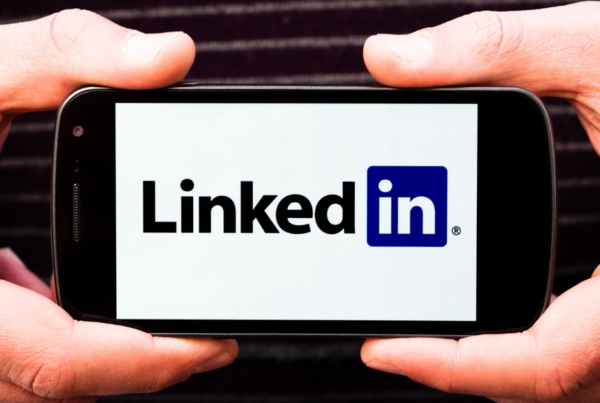The printing industry is dedicated to protecting the ecosystem. Commercial printers have taken steps to lower the environmental footprint in production facilities and reduce the environmental impact of products they create for their clients. Printers are accomplishing these objectives by combining procedural governance, infrastructure investments, and adherence to established guidelines.
Certifications
Many commercial printers submit to independent third-party certification audits to align their facilities with guidelines published by the Sustainable Green Printing Partnership (SGP). To attain certification printing companies must pass air quality tests and achieve acceptable performance in areas such as energy use, health, safety, and other environmental evaluations. SGP certified companies in our industry appoint teams to coordinate their sustainability efforts and maintain documentation supporting their environmental strategies.
The SGP recognizes and acknowledges printers committed to sustainable printing through a formal registry program. The process to achieve and retain certification requires serious work. This non-profit organization certifies a print operation’s sustainability efforts meet and exceed measures mandated for regulatory compliance. The SGP certification was created specifically for the printing industry and encourages innovation by stakeholders, including customers, to develop a more sustainable and accountable supply chain.
The Sustainable Green Printing Partnership establishes rigorous standards and demands measurable results from qualifying print companies. Here are a few of the areas print companies must address to become an SGP certified printer:
- Energy Savings–Electricity use reductions, smart thermostats, energy-efficient lighting
- Waste Reduction–Send less trash to landfills and recycle more paper, plastic, and cardboard
- Emission Reduction–Reduce greenhouse gas emissions
- Reduced Resource Consumption–Reduce water usage and recycle solvents
SGP certification elevates printers to an elite group of top sustainable printers, recognized by both print buyers and the printing industry. Certification is difficult. It takes most print companies 11-17 months of effort to achieve certification. Bolger Printing is one of only three SGP certified printers in Minnesota. CLICK HERE to see our SGP performance statistics.
Across the printing industries printers choose paper manufactured from timber harvested from sustainable managed forests according to the Forest Sustainability Council (FSC). The FSC measures forests against 10 environmental principles and 57 criteria designed to allow foresters to meet current needs for their products without compromising the health of the world’s forests.
Locally, Printing Industry Midwest (PIM) members commit to go beyond compliance and decrease waste, engage in recycling activities, maximize energy efficiency, and create healthy and safe work environments. Bolger printing is a charter member.
Corporate Culture
Environmental stewardship means more than just qualifying for the certifications and standards established by outside entities. A strong environmental movement within the printing industry makes sure manufacturing processes, facilities, and people operate in a manner that protects the environment.
- Vegetable-based inks are less harmful to the environment while producing vibrant, high quality images.
- UV coatings produce glossy surfaces resistant to fingerprints and dirt and are solvent free.
- Print companies equip buildings with energy efficient lighting, heating, and cooling systems.
- Printing press operators focus on reducing waste by minimizing the number of test runs. Most modern printers use a digital workflow designed to ensure they prepare all elements of print jobs before sending them to the presses.
- Account managers at companies like ours will also help you lower the environmental impact from direct mail campaigns. Account managers can aid with list choice and filters to make sure the US Postal Service directs all your mail to your target audience. State-of-the-art software allows postal experts to correct and update data to confirm addresses are current and deliverable before printing the materials.
- Digital print processes allow clients to order smaller quantities of forms at reasonable prices. This lowers the environmental effect that occurs when stockpiles of documents become obsolete and companies must replace them with new versions.
What About Recycled Paper?
Printing experts help customers choose substrates designed to be environmentally friendly while still maintaining product quality and sustaining the brand images customers have worked diligently to establish. Often, paper with recycled content is the right choice but did you know that paper labeled as recycled may vary in composition? Several terms apply to recycled paper:
- Recycled Paper–As defined by the Environmental Protection Agency, at least 30% of the fibers used to create paper listed as recycled must come from post-consumer sources. Paper packaging labels list the percentage of recycled fibers in the material. Percentages can vary.
- Pre-Consumer Waste–Paper contains materials such as paper scraps created as part of the paper manufacturing process. These paper fibers never left the mill and skip the treatments to remove ink or toner.
- Post-Consumer Waste–The mills make this variety of recycled paper from fibers reclaimed from consumer-discarded material. This paper would otherwise have entered a landfill. Recyclers must remove ink, coatings, and toner before they can use these fibers to create new paper products.
- Chlorine Free–Recyclers have historically used chlorine to bleach paper to a whiter shade, but the process produces toxins. Paper labeled as chlorine free is unbleached or the recycling plant has bleached the paper fibers with substances besides chlorine. Some of these substances are still environmentally damaging, though not as harmful as chlorine.
- Virgin Fiber–Paper labeled as virgin fiber is made from materials never before used to produce paper. Some recycled papers include a percentage of virgin fibers. Virgin fibers are stronger than recycled fibers.
Paper recycling benefits the ecosystem but it still impacts the environment. Paper recycling plants typically use energy generated by fossil fuels to power the equipment necessary to reclaim paper fibers and make them useful again. Recyclers must dispose of waste from the de-inking process so chemicals and old ink do not enter the water supply. Paper recycling is a good thing, but recycling methods are not entirely impact-free.
Non-Paper Communications
Today, marketers conduct campaigns and other communications in digital channels and print. Environmentally conscious printers can help reduce the environmental impact generated by printed materials and develop coordinated multi-channel campaigns that take advantage of features each channel provides. Learn more about multi-channel communication strategies in our Beyond Print magazine. CLICK HERE to subscribe.
Companies often use direct mail in customer acquisition campaigns, leading prospective customers to digital landing pages, social networks, or other non-printed channels where subsequent communications take place. By employing these strategies, clients achieve satisfactory results while simultaneously lowering the environmental footprints of their campaigns.
Together with our clients, organizations throughout the entire printing supply chain make a difference in how printed materials affect our world. Ask us how we can help your organization reach its goals for environmental sustainability.







